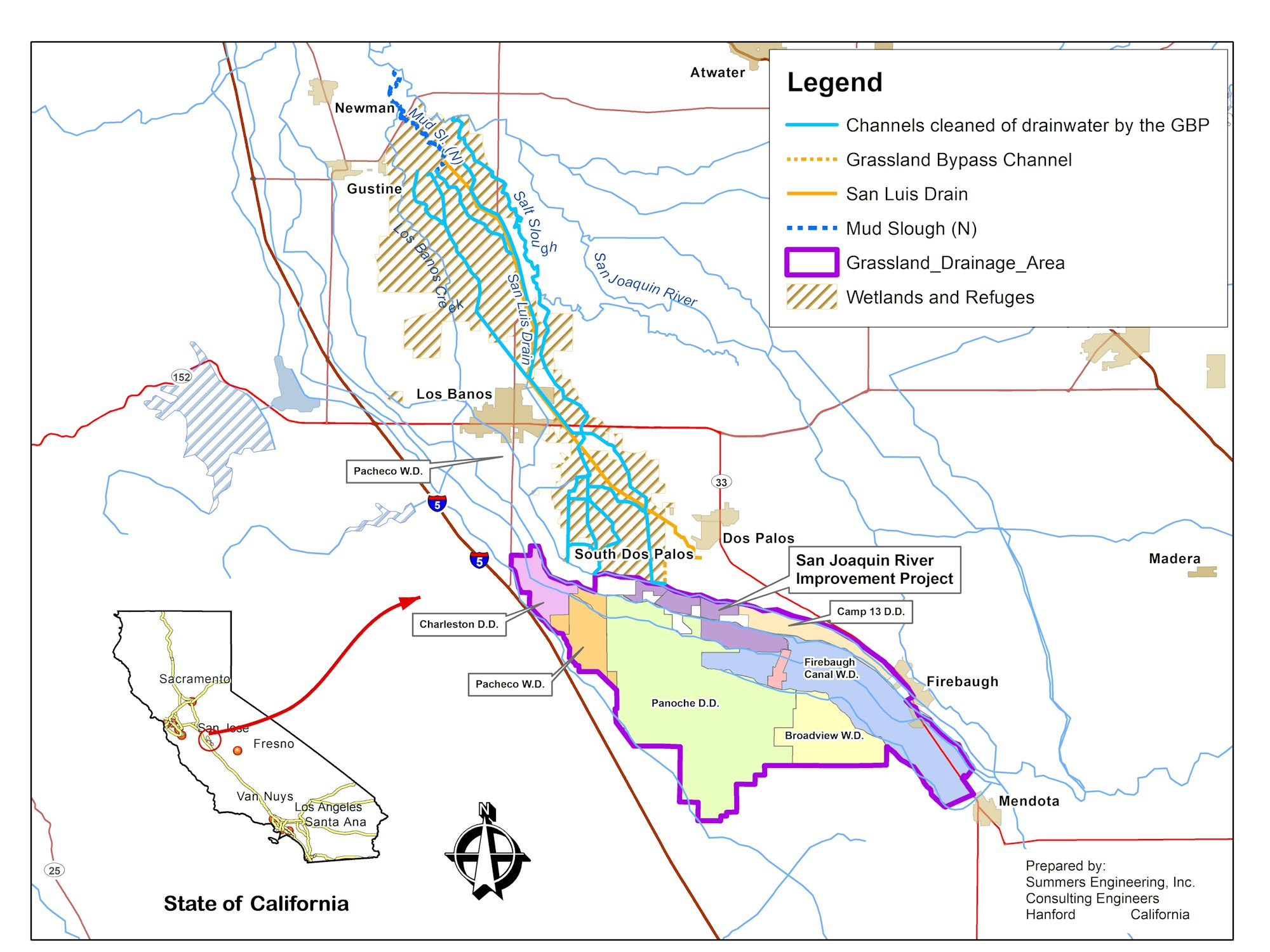Historical information Grassland Basin Authority

Drainage reuse began as an experimental drainage management program in 1998 by diverting subsurface drain water on to pasture fields as a source of irrigation water. Over the next few years, trials, experiments, and research helped identify the salt tolerant crops that would best consume the saline drain water. Funding assistance from California Proposition 13 allowed for the purchase of 4,000 acres of marginal land that was developed to salt tolerant crops and became the San Joaquin River Improvement Project (SJRIP). Today, the SJRIP has expanded to 6,000 acres, with approximately 350 acres of pistachios and the remaining land planted to salt tolerant forage grasses (mostly Jose Tall Wheatgrass). The SJRIP has provided a key tool to manage almost all of the subsurface drain water produced by conventional agriculture.

